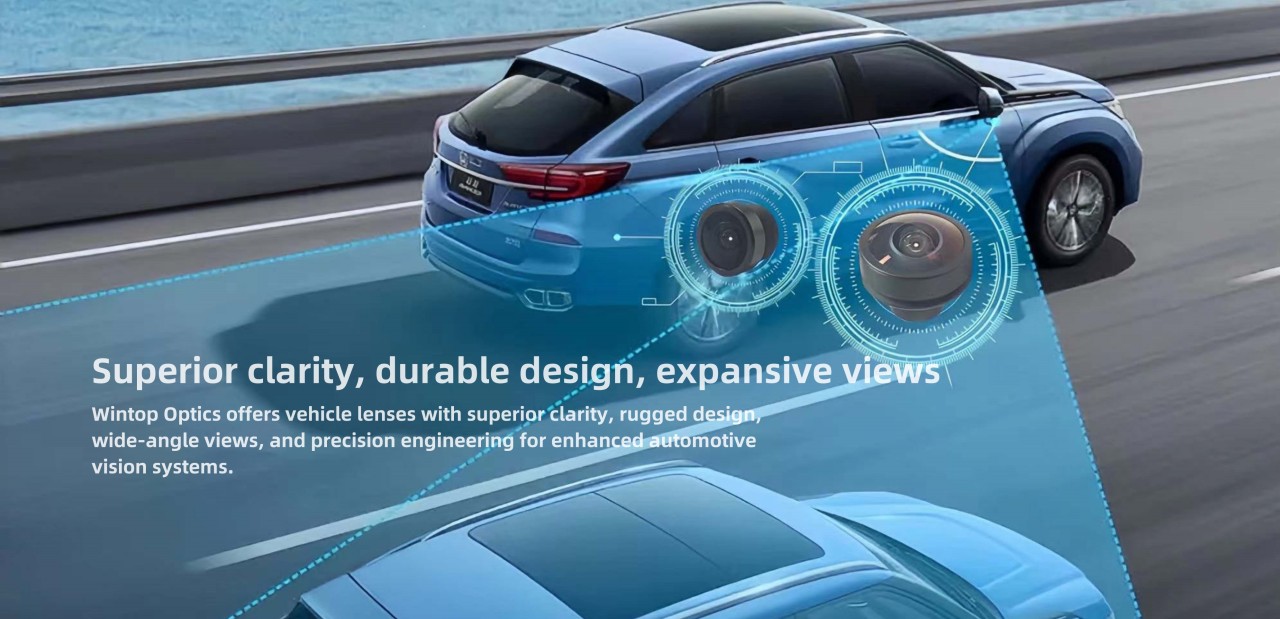Development direction and market prospect of optical lens
Nov 16, 2024
With the continuous progress of science and technology, the optical lens industry has made remarkable development in the direction of high performance, miniaturization and intelligence. According to market research data, the global optical lens market size is about 22.5 billion US dollars in 2023, and is expected to exceed 34 billion US dollars in 2028, with a compound annual growth rate (CAGR) of 8.5% [Source: Market research agency data]. Optical lenses are widely used in the fields of smart phones, security monitoring, autonomous driving and smart home, and the continued growth of these high-demand areas is driving the rapid expansion of the optical lens market. This paper will deeply discuss the main technical development direction and future trend of optical lenses.
First, the high performance of optical lenses
The improvement of optical lens performance is the key to the core competitiveness of the optical industry. In the consumer electronics and automotive sectors, the demand for high resolution, high light transmission and low light performance of lenses is increasing. According to statistics, the average resolution of the global smartphone camera in 2023 reached 64 MP, and the on-board camera of high-end models reached about 150 MP, reflecting the continuous growth of the market demand for high-resolution optical lenses [Source: Smartphone and Automotive Market analysis].
High resolution and large aperture design: In terms of high resolution camera technology, with the popularity of sensors above 1 inch, lens design needs to have higher resolution and large aperture to match sensor performance. For example, in security cameras, large aperture designs (such as f/1.8 and lower) can improve light absorption at night and improve imaging in low light.
Anti-glare and multi-layer coating technology: The latest anti-glare and multi-layer coating technologies, such as VIKUITI® coating, can reduce glare by up to 95% and improve contrast. This is crucial in the field of in-car cameras and outdoor surveillance, enabling the lens to provide clear images in high-light reflective environments.
Second, lens miniaturization and lightweight
With the increasing demand for portable devices and unmanned equipment, miniaturization and lightweight have become an important development direction for optical lenses. According to statistics, the global micro optical lens market is expected to reach 8 billion US dollars in 2025, with an annual growth rate of nearly 10% [Source: Micro lens Market Analysis]. Smart phones, drones, robots and other devices on the lens size and weight requirements are increasing year by year, prompting the design of optical lenses tend to miniaturize.
Miniature lenses and modular design: Miniaturization and modular design help optical lenses to be more easily integrated into smart devices, such as in the latest smartphone camera modules, micro-lenses are stacked and arranged to achieve integrated imaging functions of telephoto, wide Angle and ultra-wide Angle in a limited space.
Lightweight materials and low power design: In micro devices such as wearables, the weight and power consumption of optical lenses become important factors affecting the user experience. The lightweight aspherical lens and low-power lens control chip design can reduce battery consumption by more than 10% and extend the battery life of the device.
Third, intelligent and automated functions
In recent years, optical lenses have continuously integrated AI and automation technology in the field of image processing, so that the lens has intelligent perception, object recognition and adaptive scene functions. According to the data, the AI-driven optical lens market is expected to reach $5 billion by 2028, with an annual growth rate of more than 12% [Source: AI Optical Lens Market Analysis]. This enhancement of intelligent capabilities is particularly applicable to areas such as autonomous driving, smart home and security monitoring.
Autofocus and face recognition technology: Many of the latest optical lenses are equipped with machine learning-based autofocus and face recognition capabilities with an accuracy of more than 98%. In security and intelligent access control, the lens can automatically track moving objects and identify them, greatly improving security efficiency.
Depth perception and 3D modeling: Lenses equipped with 3D TOF (Time of Flight) sensors can capture depth information in real time, playing a key role in robot visual navigation, unmanned ranging, 3D modeling and other fields. For example, current depth-sensing technology can identify object distances with millimeter-level accuracy, helping autonomous driving systems detect obstacles more precisely.
Fourth, future trend: multi-function integration and low-cost manufacturing
Multifunctional integration and low-cost manufacturing are the future development focus of optical lenses. Through innovative manufacturing techniques and the application of new materials, the cost of optical lenses is falling, while the functional integration is constantly improving. Market data shows that the annual growth rate of multi-function lenses is expected to reach 13% between 2023 and 2028, especially in the field of driverless and smart home [Source: Multi-function Lenses Market Research].
Multi-sensor integration: With the rise of emerging technologies such as 5G and the Internet of Things, multi-sensor integrated lenses are gradually becoming popular. In drones, robotics and other applications, lenses that integrate infrared, thermal, optical imaging and other functions can more efficiently acquire environmental information. Such lenses could also help autonomous vehicles better identify pedestrians, vehicles and other road information.
Optical plastics and liquid lenses: The application of liquid lenses and optical plastic materials is reducing the manufacturing cost of optical lenses by about 20%. The liquid lens uses an electric field to control the focal length, which is fast and small, making it suitable for smartphones and small monitoring devices.
Conclusion
The future development direction of optical lenses will be deeply explored around high performance, intelligence and multi-function integration. Under the current global trend of increasing demand for smart devices and automation technology, the market potential for optical lenses is huge. The optical lens industry will continue to benefit from technological advancements and market expansion to provide better imaging solutions for future areas such as autonomous driving, smart home and smart security.
